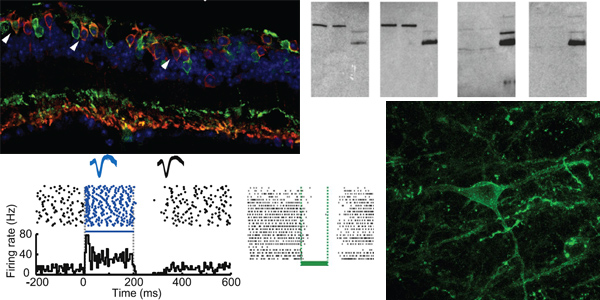Prototype strategies for diagnosing and treating brain disorders

New technologies for mapping biological specimens, recording brain activity and signaling, controlling brain activity and signaling, and building brain circuits, may be capable someday of serving in diagnostic or therapeutic roles, helping improve the health of human patients. We are applying our technologies for molecular mapping, dynamical control, and dynamical recording to clinically relevant problems. We are applying our molecular mapping tools to human clinical specimens such as biopsies from cancer patients, organoids and in vitro cultures derived from human cells, and specimens of human pathogens. We are inventing new noninvasive methods for targetedly controlling brain dynamics, such as methods that utilize the nonlinearity of neurons to focus on specific regions deep in the brain. We are assessing, often in collaborations with other groups, the translational possibilities opened up by our technologies, exploring the safety and efficacy of our technologies in preclinical animal models. Sometime this requires adaptation of technologies in new forms, that maximize efficacy and safety, or minimize invasiveness. For example, optogenetic tools may be need to be made that respond to red light and thus are less invasive, brain stimulation devices may need to be made into wireless and less invasive forms, optical neural recording may benefit from new geometries and materials that increase the resolving power of optical fibers, brain surgery may benefit from robotic automation, and genetic circuits may benefit from encapsulation in synthetic minimal cells that facilitate their safe and effective operation. We are also working with groups who are utilizing our molecular mapping, dynamical control, and dynamical recording tools to design new kinds of intervention, based upon newly revealed neuroscience, that may help human patients, e.g. noninvasive methods that may help patients with Alzheimer’s disease and other diseases. New kinds of "brain co-processor" may be possible which can work efficaciously with the brain to augment its computational abilities, e.g. in the context of cognitive, emotional, sensory, or motor disability.